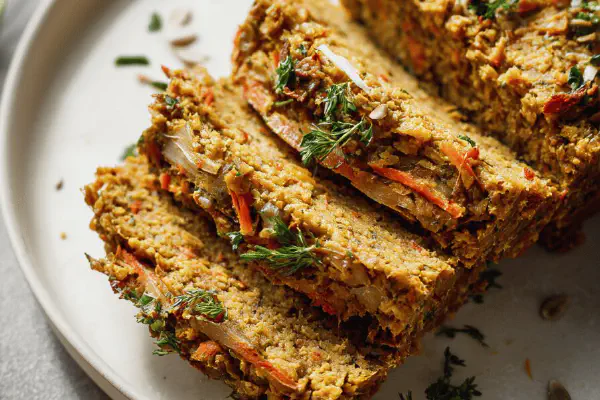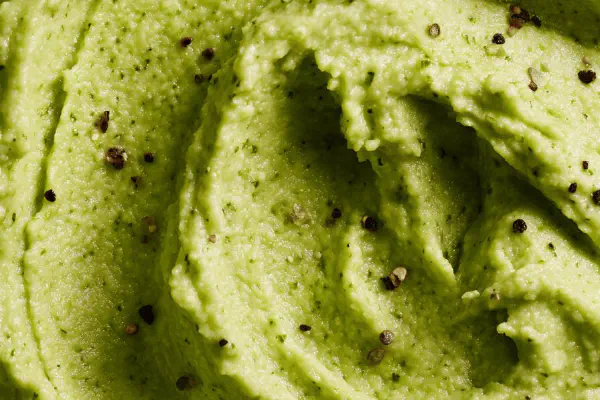Sunflower Veggie Pâté

By Emma
Certified Culinary Professional
Ingredients
- 130 ml shredded peeled carrots
- 120 ml shredded peeled parsnips
- 125 ml raw sunflower seeds
- 125 ml almond butter
- 1 small onion, quartered
- 55 ml water
- 30 ml olive oil
- 20 ml fresh lemon juice
- 5 ml toasted sesame oil
- 3 ml sea salt
- Ground black pepper
About the ingredients
Method
- Heat oven to 175 C; rack in center position. Grease 20 by 10 cm loaf pan generously with olive oil; sets a nonstick base, important for unmolding clean slices.
- Load all ingredients in food processor. Blend relentlessly until mixture turns uniformly thick and creamy; poke and scrap sides at intervals to ensure even processing. Aim for a consistency that holds together, not too wet or dry; texture critical here.
- Transfer mixture into prepared pan; spread surface smooth with the back of a wet spoon or offset spatula. Press down gently but firmly to avoid air gaps inside. The dense, compact form aids even cooking.
- Bake 38 to 42 minutes. Watch for color cues: edges lift and the top should be golden-brown with faint crust cracks. Insert toothpick in center; it should come out mostly clean but with moist crumbs, not wet batter.
- Remove pan from oven; cool on rack 15 to 20 minutes. The pâté firms as it cools, making unmolding easier. Loosen edges with sharp knife tip before flipping onto plate.
- Chill covered for minimum 1 hour before slicing. Flavors deepen, texture dries to perfect slice-able firmness. Stores refrigerated tightly sealed up to 7 days.
- For sandwiches use rustic bread or gluten-free wraps; topping with tangy pickles or spicy mustard adds kick.
Cooking tips
Chef's notes
- 💡 Prep shredded veggies with coarse texture; too fine means pasty crumb. Keep sunflower seeds chunkier for crunch variations. Almond butter moisture varies; adjust water carefully. Sesame oil toasted - raw oils dull flavor. Watch blending; if overdone, lose texture. Pulse mode helps but requires scraping sides often or uneven mix.
- 💡 Oven spots vary; middle rack is safest. Visual cues more reliable than timer. Look for top golden-brown shade and faint crust fractures; avoid overbaking or dry edges form. Toothpick test—mostly clean with moist crumbs inside. If too wet, add nuts or seeds next batch; too dry? Slightly more olive oil or water. Air gaps from poor pressing cause uneven bake.
- 💡 Cooling on wire rack critical; bottom stays dry and crust sets. Cooling too quick or too slow affects slice-ability; fridge chill locks form. Avoid slicing warm loaf—crumbs fall apart. Use serrated knife with gentle back and forth, no pressing down hard. Loaf stores well up to a week in airtight fridge; stale smell means container issues.
- 💡 Ingredient swaps common but adjust liquids each time. Sweet potato replaces carrots but absorbs moisture differently, so reduce water slightly. Pumpkin seeds instead of sunflower seeds bring softer texture and higher oil content; drop water to balance. Cashew butter swap for almond; richer texture but changes bite slightly.
- 💡 Salt is subtle tune — add after blending if unsure. Can increase at sandwich stage. Fresh lemon juice crucial; bottled juice dulls bright notes quickly. Onion optional; garlic usually too strong, mask subtleties here. Water quality matters—chlorinated tap water kills delicate raw nut flavors. Filtered or bottled preferred.
Common questions
Can I use other nuts instead of almond butter?
Yes but moisture varies. Cashew butter richer but softer loaf texture. Peanut butter too strong flavor, may overpower. Adjust water when swapping nuts. Raw and unsweetened best for consistency.
How to know when pâté is baked?
Watch color closely. Golden edges, crust cracks faintly. Toothpick inserted shows mostly clean with moist crumbs, no wet batter. Overbaking dries loaf—crumbly. Underbaked? Loose, mushy slices. Oven spots cause uneven doneness; rotate if needed.
How to fix crumbly loaf slices?
Chill longer in fridge minimum 1 hour, even more if very warm initially. Press mixture down firmly before baking—no air gaps helps hold structure. Use serrated knife gentle sawing motion not pressing. Skip chilling and expect crumbly mess.
Best storage method?
Airtight container in fridge, lasts 5-7 days. Wrap slices individually or separate with parchment to avoid sticking. Freezing possible but texture changes; thaw slowly in fridge. Avoid plastic wrap directly on loaf surface; trapped moisture ruins crust.



